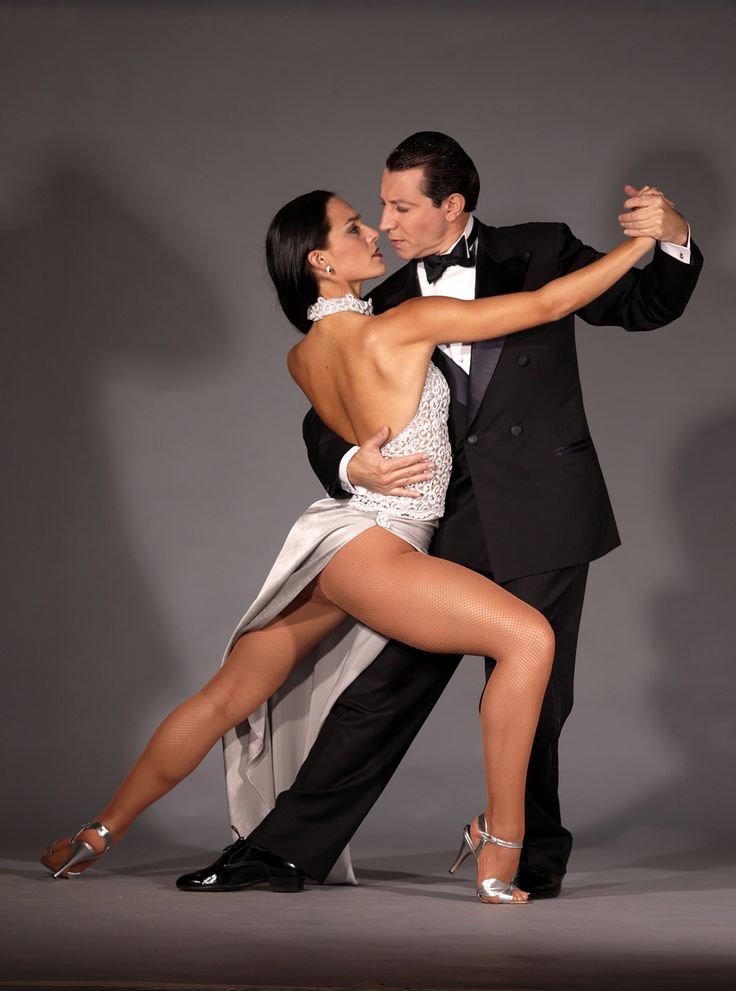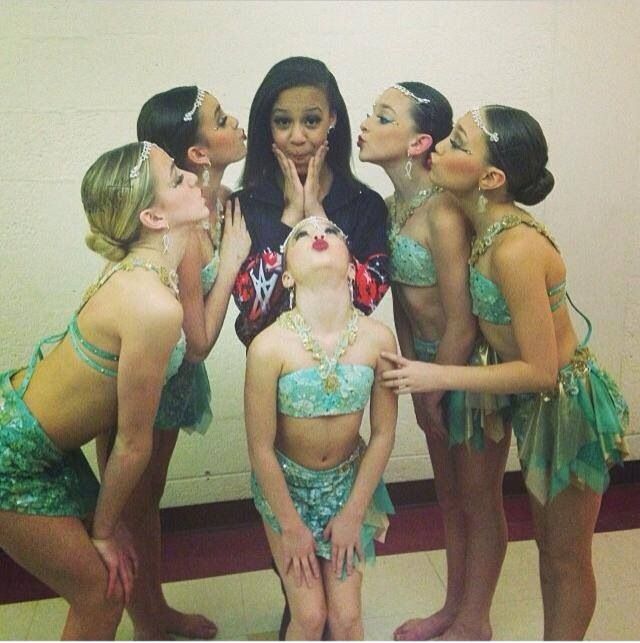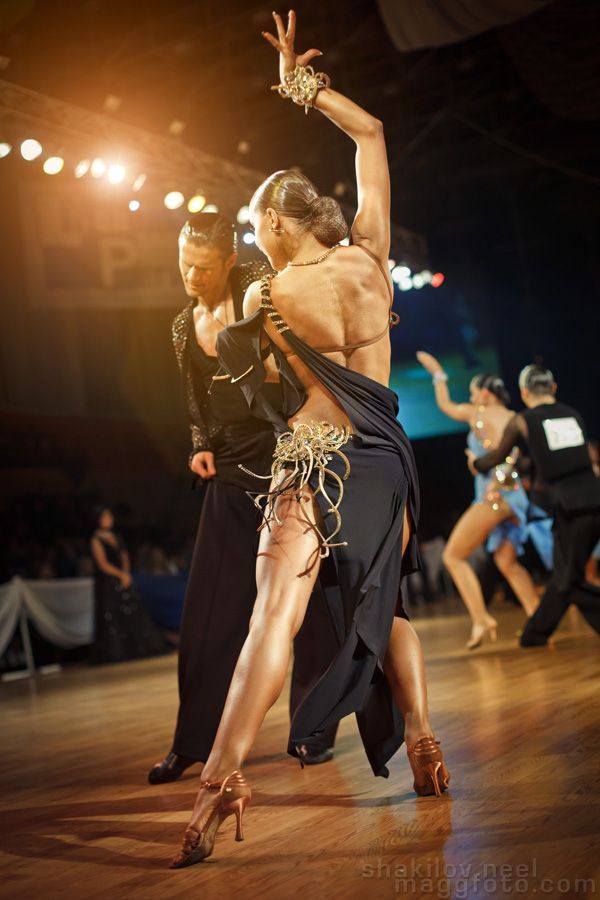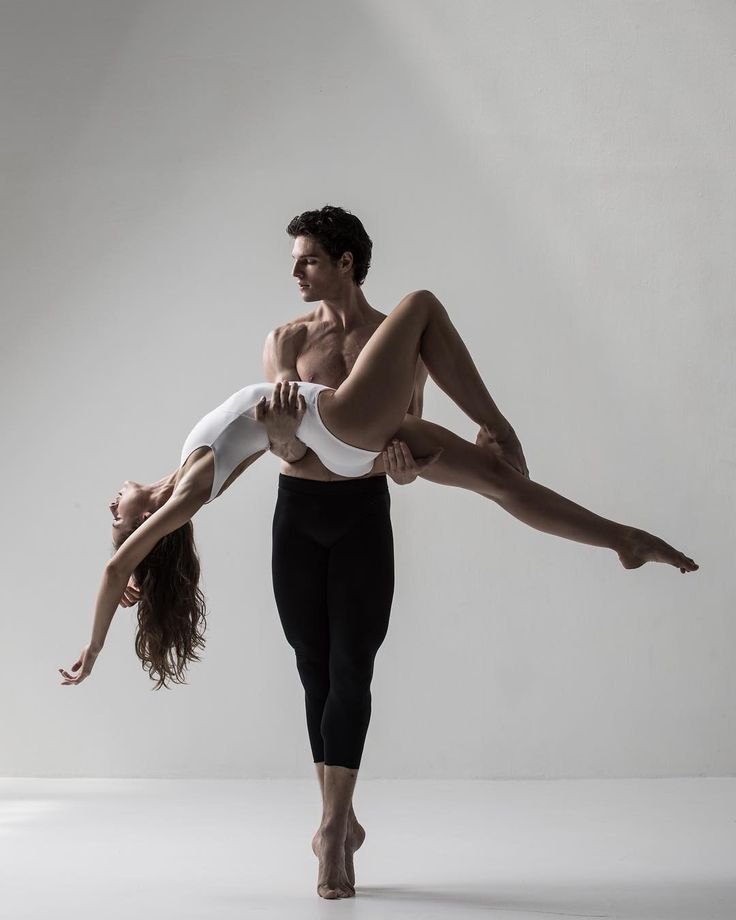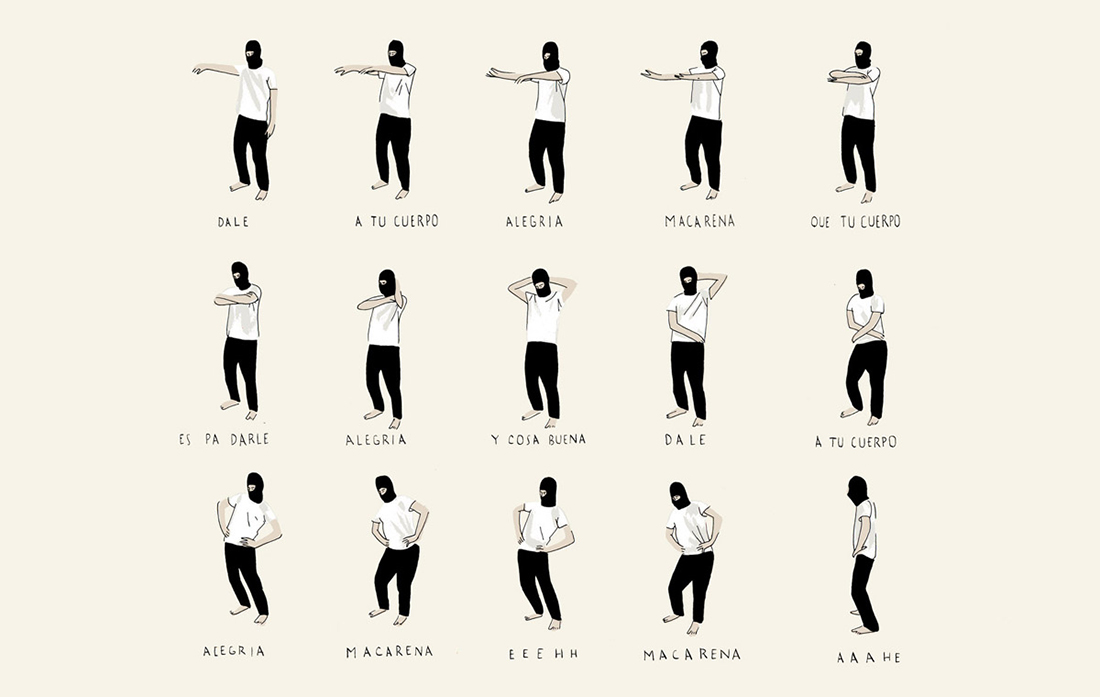How to flare dance
Step-by-step guide to the move
© Christian Poschner
Breaking
B-Boy Flying Machine explains why this simple powermove is very important with tips on how to practice it, and what to avoid while doing it.
Written by Divya Naik
4 min readPublished on
Read this article in Hindi.
According to B-Boy Flying Machine, the flare is a classic powermove that all breakers should perfect.
It is an acrobatic move that is sometimes called the ‘Thomas Flare’ after its originator, Kurt Thomas. The move requires a lot of strength and many months to master, but it is one of the beginner level powermoves that most breakers should learn early in their dance journey.
For Flying Machine from Mumbai – a three-time Red Bull BC One Cypher India Champion and the first Indian to participate in the Red Bull BC One World Finals – the flare is a basic move he is able to combine with several other powermoves.
Flying Machine was recently part of the Red Bull BC One Local Hero Tour, conducting workshops in cities across India. Here he explains what it takes to perfect the flare, adds some pro tips, and also warns on how to avoid injury while practicing the move.
Flying Machine conducting a workshop in Guwahati
© Focus Sports
01
Understanding the flare
B-Boy Flying Machine says that every dancer has a base set of moves they would have practiced to the point where the move becomes second nature for them.
“For me, it is the flare. Powermoves are too dynamic and there have to be moves in between that give you a chance to recover your energy. The flare really helps me to centre myself again,” he says.
Flying Machine says he will drop a flare into his routine if he is losing momentum, taking time to think up his next move, or blacking out because of over exertion. He says the flare is a saviour and helps him easily transition.
A B-Boy doing flares
© Annika Wallis/Red Bull Content Pool
02
Basics for the flare
Flying Machine says it is important to work on your arm, leg and core strength before practicing the flare.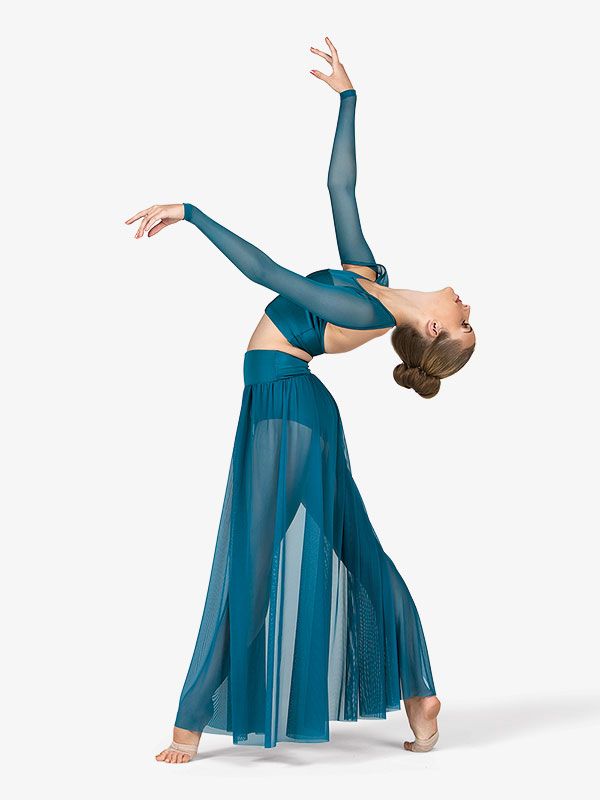
“Flexible legs are a plus, but hip flexibility is of utmost importance as that would allow you to rotate your whole body better,” he says, adding that swinging your body in circular momentum is the main element of the flare, hence hip flexibility being important.
Flying Machine suggests warming up your body properly to avoid injuries. Simple running can help warm up your body, and basic hamstring and butterfly stretches can help get your muscles and joints ready.
4 min
Flare fundamentals
B-Boy Lil G gives advice on how best to do a flare. He shows you how repetition and practice will help you.
03
Step 1
The starting position is the suplex where your hands are on the floor balancing the weight of your body. Your feet should hang just wide of your arms. Your hands should be pointing out at 45-degree angle.
04
Step 2
Kick your left leg around, towards your face. Simultaneously lift your left hand and swing it up over your body and under. As your left leg swings up and in front of you, naturally let your right leg follow in the same motion.
Simultaneously lift your left hand and swing it up over your body and under. As your left leg swings up and in front of you, naturally let your right leg follow in the same motion.
05
Step 3
As your right leg completes the rotation in front of you, your left hand should make contact with the floor behind you, and you shift your weight to your left hand. Continue the momentum of your legs, swinging them under your body and returning to the starting position. Keeping the momentum going and continuing the circular movement with your legs will let you keep doing multiple flares.
Flying Machine conducting a workshop in Pune
© Focus Sports
06
Pro tip to help you practice
Being able to do multiple flares is about keeping the circular movement going with your legs and shifting your body weight on your hands.
“You start the move by having one of your hands on the floor, pushing down on the floor and then continue maintaining the momentum with your other hand.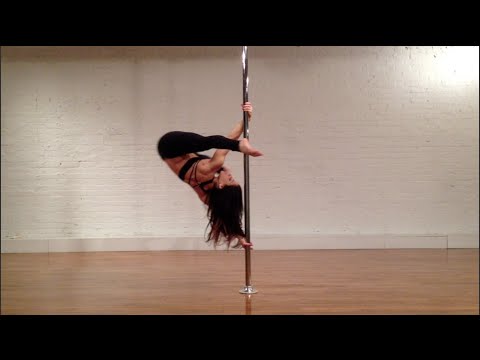 No other parts of the body should touch the floor. I would suggest practicing planking to help build your core strength to maintain your momentum,” says Flying Machine.
No other parts of the body should touch the floor. I would suggest practicing planking to help build your core strength to maintain your momentum,” says Flying Machine.
07
Common mistakes to avoid
Don’t place your master hand (right hand in this tutorial) too far ahead, too far out or too far into your body. This will cause you to use more energy to bring your body in control and can also risk injuries.
Don’t kick outwards with your left leg. You are ideally looking for rotational or circular movement. Kicking out rather than around will through you off balance.
Breaking
Breaking
Dance
How to Flare – Breakdancing Ninja
A very cool move that is a sticking point for most breakdancing careers. Most breakdancers train until they can do half or one flare but do not put in the work to do continuous flares which places you in the advanced category. Flares are difficult because you have to be very good at a couple of things at the same time; strength, flexibility and technique.
Pre-requisites
Strength
Wrist / Forearms
You need handle your bodyweight on your wrists. Learning flares is harsh on your wrists and weak wrists get injured. This is the most common injury when learning flare and not all breakdancers overcome it. Get your wrists strong do these exercises:
Shoulders
Once your wrists can handle your bodyweight the next higher up muscle needs to support your bodyweight, your shoulders. I’ve previously covered shoulder strength so to summarize be proficient in handstands and handstand presses. If you don’t know what that is you aren’t ready for flares yet. Below is the shoulder training to be injury free and strong for flares.
Flare Exercises
L-Sit
Can be done on the ground, strive to hold your feet above your belly button. Do 10 second holds 3 times a week. This will strengthen your hip flexors so you can raise your legs high in the front position of flare.
Flexibility
Lack of flexibility limits your ability to perform the correct flare technique. This makes the move alot harder to perform, under rare circumstances bad flexibility can be compensated with great strength, however its harder to perform the flare this way and it doesn’t look good. You need enough flexibility to raise your knee your face and shoulder to get really clean flares.
This makes the move alot harder to perform, under rare circumstances bad flexibility can be compensated with great strength, however its harder to perform the flare this way and it doesn’t look good. You need enough flexibility to raise your knee your face and shoulder to get really clean flares.
Shoulder flexibility is overlooked in flares. You need to be competent at skin the cats so you have the shoulder flexibility to raise your hips high in the front part of the flare.
Technique
The best way to practice the flare is start double leg circle training with the bucket. This cuts the move in half. When you first start training there is a lot happening at once in the flare. Double leg circle training reduces what you have to think about so you can focus on hand placement, keeping your legs straight and pushing with your shoulders. This video shows double leg circles:
Once your hands and shoulders know what to do, the last step is controlling your legs. Your legs kick again and again in a flare at different times. You can practice leg control by trying the move, but this is the most frustrating way. You can practice parts of leg kicking with your butt on the floor, this is good for the front portion of the move in the beginning but not helpful as you advance. There is a flare drill for working the rear part of the flare that is real good and shown below.
The best way to work the legs is to use a flare trainer that holds your legs then you can perform many repetitions and learn the technique.
What isn’t mentioned in the video is the amount of time it takes to get flare. If you are a beginner it will take at least 6 months to get decent strength and flexibility. From there another 6 months to get enough repetitions to be able to do a few rounds of flare. This is the best case scenario and it is common for breakdancers to dabble in flares for years and not be able to do more than one or two.
If you are a beginner it will take at least 6 months to get decent strength and flexibility. From there another 6 months to get enough repetitions to be able to do a few rounds of flare. This is the best case scenario and it is common for breakdancers to dabble in flares for years and not be able to do more than one or two.
Department of dance sport - Municipal budgetary institution "Sports school "Fakel" of the city of Chelyabinsk
Ballroom dancing is a group of various pair dances, some of which have folk origins. They were performed at balls, which were held in rooms covered with parquet. From the huge variety of both elite (historical and everyday) and folk dances, dances were included in the ballroom group, characterized by two features: all ballroom dances are paired and a man and a woman make up a couple.
"Ballroom dancing" currently refers to the phrases "sports dancing" (SBT, "sports ballroom dancing") and "dancesport". This is reflected in the names of various dance organizations, for example: "Moscow Federation of Dance Sports" or "Moscow Federation of Dance Sports". Throughout the dance world, dancesport competitions are divided into 3 programs: European (Standart or Modern), Latin American (Latin) and ten dances (“ten”). The European program includes: slow waltz, tango, Viennese waltz, slow foxtrot and quickstep (fast foxtrot). In Latin American: samba, cha-cha-cha, rumba, paso doble and jive.
Throughout the dance world, dancesport competitions are divided into 3 programs: European (Standart or Modern), Latin American (Latin) and ten dances (“ten”). The European program includes: slow waltz, tango, Viennese waltz, slow foxtrot and quickstep (fast foxtrot). In Latin American: samba, cha-cha-cha, rumba, paso doble and jive.
History and definition
The term "ballroom" refers to paired non-professional secular dances that originated in medieval Europe. These dances changed very much: any era of European history - Renaissance, Enlightenment, classicism, romanticism - gave rise to a kind of dance complex. Throughout European cultural development, ballroom dancing has been influenced by a wide variety of ethnic sources as well as professional dance. Ballroom dancing of the 20th century was formed on the basis of European dance, which at the turn of the 19th and 20th centuries was breathed new life by African and Latin American musical and dance culture.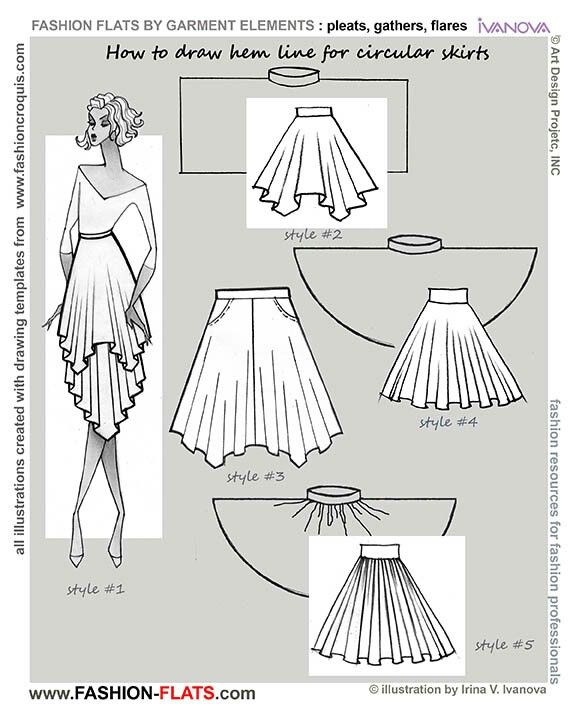 The vast majority of modern ballroom dancing has African "roots", already well disguised by the technical processing of the European dance school.
The vast majority of modern ballroom dancing has African "roots", already well disguised by the technical processing of the European dance school.
In the 1920s in England, a special Council for Ballroom Dancing was established under the Imperial Society of Dance Teachers. English specialists standardized all the dances known by that time - the waltz, fast and slow foxtrots, tango. This is how competitive dances arose, and since then ballroom dance has been divided into two areas - sports and social dance. At 19In the 1930s-1950s, the number of standard ballroom dances increased due to the fact that five Latin American dances were added to them (in this order: rumba, samba, jive, paso doble, cha-cha-cha).
Now there are competitions in dancesport. Several programs have been formed: European, Latin American, biathlon (ten dances), European and Latin American sequoia (three-minute show to original music), European and Latin American formation (competitions of ensembles of 8 couples). Amateur world championships are held under the auspices of the WDSF (formerly IDSF), and professional ones are held under the auspices of the World Dance Council. English competitions continue to be the most prestigious in the world, in particular, the UK Open and the Blackpool Dance Festival. Another direction of competitive dance is the competition of mixed pairs Professional-Amateur (Pro-Am), this direction is especially developed in the USA and Canada.
Amateur world championships are held under the auspices of the WDSF (formerly IDSF), and professional ones are held under the auspices of the World Dance Council. English competitions continue to be the most prestigious in the world, in particular, the UK Open and the Blackpool Dance Festival. Another direction of competitive dance is the competition of mixed pairs Professional-Amateur (Pro-Am), this direction is especially developed in the USA and Canada.
In the United States of America, a peculiar national version of both some ballroom dances and competitions in them - "American Smooth", "American Rhythm" - is preserved.
The word “ball” came to Russian from French and comes from the Latin verb ballare, which means “to dance”. From a huge variety of both elite (historical and everyday) and folk dances, dances characterized by the following features fell into the ballroom group.
All ballroom dances are in pairs.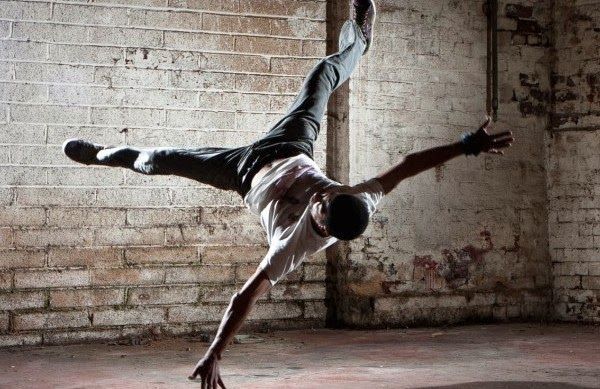 The couple is made up of a gentleman and a lady, dancing in compliance with the points of contact. In the European program this contact is closer. It persists throughout the dance. In the Latin American program, the contact is more free, most often carried out due to joined hands and sometimes it can be either lost altogether or strengthened due to tension during the execution of figures. Since the performance of ballroom dancing requires certain skills and training, its popularity in society has declined over time. Twist's appearance at 19The 60s marked the end of pair dancing. Such dances as the waltz, tango, foxtrot, etc., actually ceased to serve for mass entertainment. A new page has been opened in the history of ballroom dancing.
The couple is made up of a gentleman and a lady, dancing in compliance with the points of contact. In the European program this contact is closer. It persists throughout the dance. In the Latin American program, the contact is more free, most often carried out due to joined hands and sometimes it can be either lost altogether or strengthened due to tension during the execution of figures. Since the performance of ballroom dancing requires certain skills and training, its popularity in society has declined over time. Twist's appearance at 19The 60s marked the end of pair dancing. Such dances as the waltz, tango, foxtrot, etc., actually ceased to serve for mass entertainment. A new page has been opened in the history of ballroom dancing.
Classification of dancers by skill level
H class (letter “H” means “beginner” or “zero class”) or SBT school of ballroom dancing. There are no competitions in this class, the class is included in the system of mass sports.
H-3 - starter class where slow waltz, cha-cha-cha and polka are performed. The set of elements is limited to the most basic movements[1]. H-4 is the next class in which only 4 dances are performed: slow waltz, jive, samba and cha-cha-cha. In H-5, a quickstep is added, in H-6 - the same dances as in the E class. There is a term "Hobby-class". It is applied to beginner adult athletes who would like to dance more dances and with a greater range of movements than beginner children. Often in this case, the organizers of the competition do not impose restrictions on costumes and elements performed at all. This Hobby class has a semi-official status.
E class: a sport class that can also be a starter class.
D class: to advance to the next class, you must score points in competitions.
C class: choreography not from the basic list of figures is allowed.
B class: athletes of this class get the opportunity to perform poses, lifts.
A class:
S class: From Zonder - "special" - is assigned by the decision of the Presidium of the national federation based on the results of the national Championship or Superiority.
M class: international class - the highest in dance sport.
Classification of dancers by age groups
• Beginners 5-7 years old - the oldest turns 6 years old and younger this year (by year of birth) P.S.: There are no official competitions for this group.
• Children 0 — the eldest turns 5-7 years old this year (by year of birth)
• Children 1 — the eldest turns 8-9 years old this year (by year of birth)
• Children 2 - the eldest turns 10-11 years old this year (by year of birth)
• Juniors 1 - the eldest turns 12-13 years old this year (by year of birth)
• Juniors 2 - the eldest this year turns 14-15 years old (by year of birth)
• Youth - the eldest turns 16-18 years old this year (by year of birth) year of birth)
• Seniors 1 — the youngest in the current year is 35 years old and older (by year of birth)
• Seniors 2 — the youngest in the current year is 45 years old and older (by year of birth)
The second partner in a couple can be younger than the lower age limit of their age category: in Children 2, Juniors 1, Juniors 2, Youth by a maximum of two years, in the category of adults by a maximum of five years.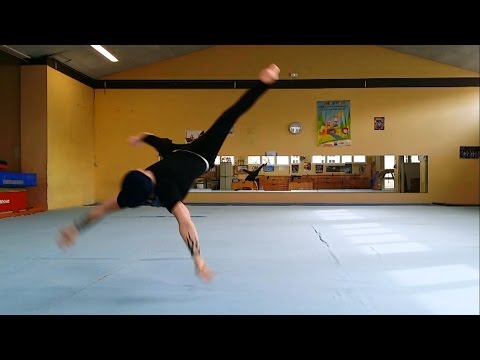
Department of Dance Sports School "Fakel"
Dance sport department (ballroom dancing) has been open in our sports school since January 2011. The department employs highly qualified coaches, professionals in their field: Khaysarov Garifyan Galimyanovich - President of the Dance Sports Federation of the Chelyabinsk Region, judge of the international category IDSF, coach of the highest category; Urvantseva Svetlana Yurievna - judge of the FTSR of the All-Russian category, coach of the highest category; Andrievsky Lyudmila Rashitovna - dancer of the international category, judge of the FTSR of the second category, coach of the first category; Vasina Elena Vladimirovna – coach of the first category.
Our coaches conduct their training sessions on the basis of the beautiful, one of the best arenas in the country - the Traktor Ice Arena. Athletes and coaches are provided with two halls with a total area of 500 sq. m. Children involved in elementary training groups are just beginning to acquire their first skills in dance sports. They learn the basic steps and elements of ballroom dancing. For them, a program of phased training has been developed. Those children who do not yet enter the big competitions quarterly show their results in an open lesson to parents, coaches of our department and other older children. Participants of such attestation lessons receive impromptu conditional prizes not lower than the third, after which the working capacity and sports aspirations of children increase. Teachers and parents draw their own conclusions based on the results of such lessons. In the groups of the training stage, many have I, II, III adult sports categories, and some already have the title of "Candidate for Master of Sports". They successfully represent and defend the honor of our sports school at tournaments of various levels, including city, regional, all-Russian and international, take part in various Championships and Championships.
m. Children involved in elementary training groups are just beginning to acquire their first skills in dance sports. They learn the basic steps and elements of ballroom dancing. For them, a program of phased training has been developed. Those children who do not yet enter the big competitions quarterly show their results in an open lesson to parents, coaches of our department and other older children. Participants of such attestation lessons receive impromptu conditional prizes not lower than the third, after which the working capacity and sports aspirations of children increase. Teachers and parents draw their own conclusions based on the results of such lessons. In the groups of the training stage, many have I, II, III adult sports categories, and some already have the title of "Candidate for Master of Sports". They successfully represent and defend the honor of our sports school at tournaments of various levels, including city, regional, all-Russian and international, take part in various Championships and Championships.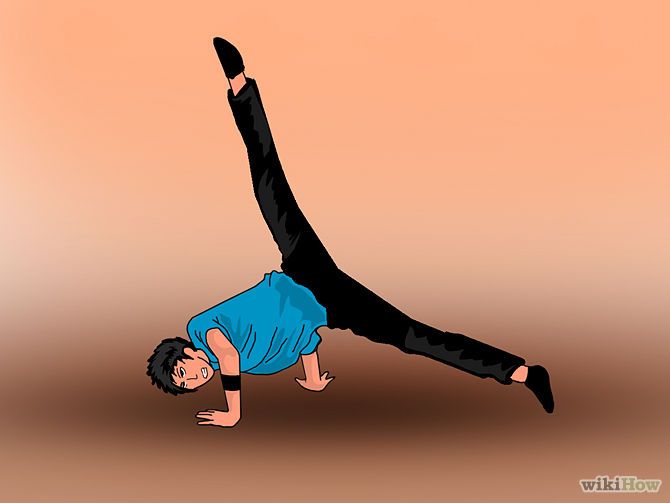 The group of sports improvement is attended by the oldest guys who have received the title of "Candidate Master of Sports" or already "Master of Sports". The guys are playing at the highest level.
The group of sports improvement is attended by the oldest guys who have received the title of "Candidate Master of Sports" or already "Master of Sports". The guys are playing at the highest level.
Torch from the ass - Dmitry (mitjaj) Martirosov
Tales about dancing
The stories I tell in class are part of the learning process. Here I collect them and my thoughts about dancing in general.
Five interactions
There are 5 interactions in any pair dance. And here, as with the laws of physics, they all work simultaneously, they cannot be isolated from each other. All dance training comes down to these five aspects, the development of these ...
Musicality
Let's talk about music in our dances
Vocabulary
Let's talk about names
Author's Method
Each teacher in social dances is the author of his own method.
Why are there so many names in English?
Why are there so many names in English?
Socik rookery
I saw a sign at the party - “Socialist rookery” Probably, it is there from the hustle, it seems that they came up with such a name for the opponents of the competition. Boogie and VKS parties also have this division. Usually those who don’t have them whine about points, but they are sure that “but I’m in ...
Boogie and VKS parties also have this division. Usually those who don’t have them whine about points, but they are sure that “but I’m in ...
Ratings in dance
Boogie and WCS have ratings: WRRC and WSDC respectively. Boogers have been talking about a “sovereign” rating for a long time, Westcosters have also recently started talking, and even started doing it. In Lindy and Balboa, no organization has appeared that maintains ratings. Although the competition...
Squeeze out drop by drop
When I bragged to Fuda that I had started teaching, he said that the hardest thing about teaching is to squeeze drops out of yourself - still not easy. When you want to share something beautiful, you start dumping it all at once. Despite the importance of some...
Count or sing
When I started dancing, a big discovery was that most foreign teachers do not count numbers, but sing. In boogie-woogie, the competitors were even forbidden to sing at some point. Dax suggests pronouncing the "mantra" - the names of the steps - it's easier to remember...
Dax suggests pronouncing the "mantra" - the names of the steps - it's easier to remember...
Why people don't know about swing
When you say: “Swing”, in response to: “what are you dancing?” - the reaction is the same in 99% of cases. Even inside the party, many people think: why didn't I know about swing before? Now it is fashionable to say: “jazz dancing”. But Swing is not only Lindy. Rock and roll - more...
Know phonograms
Boogie has a list of backing tracks that can be played at competitions. Experienced commentators know them all by heart. Someone says that this is not fair, but an experienced lindihopper knows all the standards in different arrangements. In WCS, if you don't miss parties, you can also learn...
Where are the tales from
When I couldn't dance for over a year, I went to parties and sat on tickets. Back then you could still smoke indoors. And one day several people gathered around and I told about our first boogie competition in Ivanovo.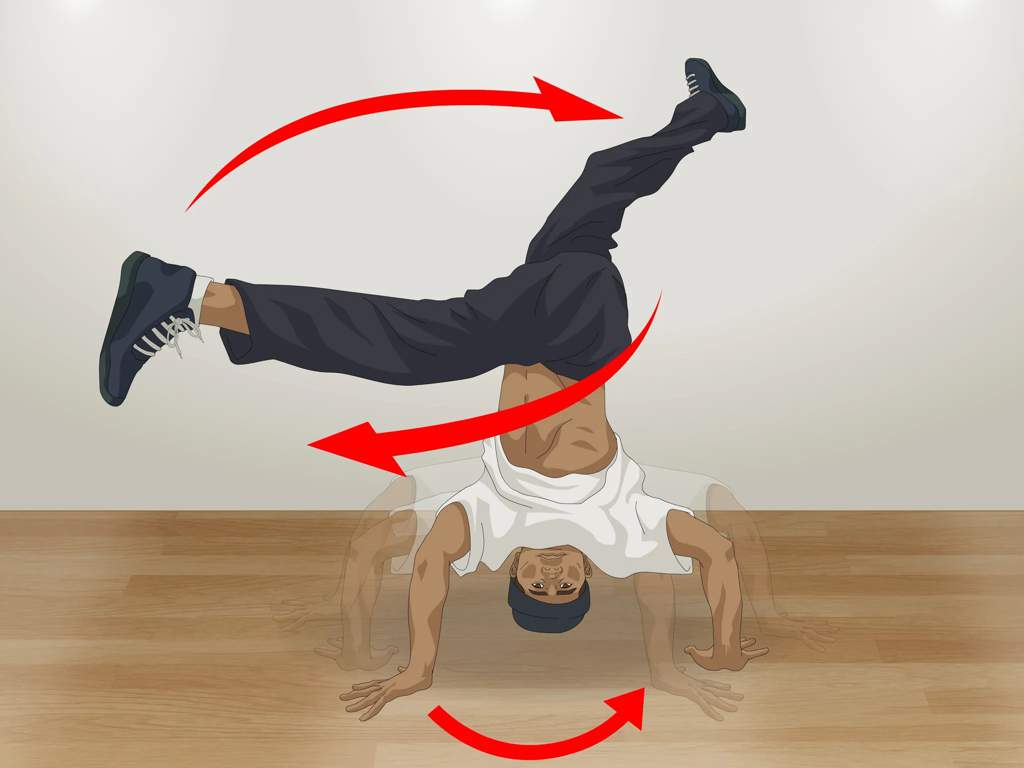 The girls were then preparing some kind of event, and...
The girls were then preparing some kind of event, and...
Who is more difficult in Lead & Follow
There is an opinion that it is more difficult to lead than to follow. It seems to me - on the contrary. The partner is constantly ready to run somewhere, while she never knows where in advance. Often the teachers just say what the partner is doing, and the partner herself will behave in a magical way. But it's not!...
Smiling, nodding, waiting
When the man realized that he had come to the dance, the girl had already memorized all the figures. Often it just seems to her, but she begins to tell her partner where and how to lead her. I usually advise partners to smile, nod and try to lead where I have planned. Hear her y'all...
Lessons about figures are useless for a partner?
This is not true at all. The partner receives new ideas of what can be done so that the partner does not feel sick from the monotony. And the partner is learning to lead. WCS says there are three principles: push, pass, whip. These are the names of the figures, but for some reason it is not enough to learn how to do only ...
WCS says there are three principles: push, pass, whip. These are the names of the figures, but for some reason it is not enough to learn how to do only ...
Just drive without regaining consciousness
Often seen in the classroom, when the teacher wants to show something, but says to the partner: Just faollow. I myself often do this too. Ksyusha, when we taught together, often asked: “Turn off the teacher mode?” This meant that she would be led where she led...
Follow up levels
The partner not only leads, and the partner does not just follow, everything is much more interesting. They say a good partner leads a partner where she wants to go. To do this, you just need to listen to your partner, and choose the best way for her to lead. Good partner shows...
Tango separate practices
There is a story, once there were separate practices for men in tango. Beginners there danced for a partner with more experienced partners. Then they were allowed to dance for a partner with new beginners. And only after that they were allowed to a party where you can bargain for a woman....
And only after that they were allowed to a party where you can bargain for a woman....
It's magic
Ksyusha, when we were teachers together, had a saying: it's magic. So we answered many of the students' questions before giving a normal answer. But if you think about it, leading-following is magic. And everything that teachers tell in class is just...
The couple is a boy and a girl
Of course, other combinations are now possible, but so far most pairs of teachers are like that. And more often at the beginning they call the name of the boy, and then the girls: Jordan & Tatiana, Kyle & Sarah. And very rarely vice versa: Hannah & Matias. In English-speaking cultures, always...
Dancing is pain
Once upon a time, the baton was passed to me, but I forgot to write. Here I am correcting it. For the first 10 years, it was only physical pain, when everything hurts in the morning after a workout. Every workout, competition, party, and in general every dance was a delight and joy. Even when...
Even when...
Self Connection
This is a large and complex topic, which is worth talking about separately. No psychology - just dancing
Interaction with oneself
Self connection - dance is the continuation of music in harmony with itself. The most important interaction is that you do it for yourself! In addition to coordination of movements, when parts of the body interact with each other, and the correct functioning of muscles, there is also internal and external ...
Partner interaction
Partner connection is magic in a space filled with music. Lead & follow is magic and cosmic connection. Somehow my partner and I were asked at a lesson: “how did you understand, and how did you lead so that this particular figure turned out?” — and we don't...
Interaction with space
Space connection - it is necessary to cut the clearing - and there will be space. Everything is simple - you need to cut the clearing ... Beginners often, carried away by repeating the exercise, hide in a corner, crash into a wall or into each other Or, on the contrary, they get too close to the teacher, which is nothing to everyone else . ..
..
Interaction with music
Music connection - dance - the continuation of music in space. Music is an integral part of dance. Stepping past the music is not a dance. The space around you is filled with music, it dictates the steps and conditions for the interaction of partners with each other and with the space. Dance...
Interaction with the floor
Floor connection - dance - these are steps on the floor to the music, together with a partner, inside the space. Dance is steps - you have to put your feet on the floor. You can stand on the foot from the toe or from the heel, the body weight can be distributed over the entire foot, concentrated at one point, stand on ...
Lead & Follow
let's talk a little more about interaction with a partner
The winner is the one who is cooler
At the judging seminar, the question arose: how can I become a champion. Thornbjorn was then the reigning world champion, and Michele, who led the seminar, asked in response: - how does Thornbjorn dance? - he's perfect! Here is your answer: be perfect - you will become a champion. Actually no...
Actually no...
1 Musical levels
There are several levels of dance musicality, depending on what you hear in the music and can reflect in the dance. At the initial stage - in the first lessons - a person is expected to simply walk to the pace. The next level is to start dancing to the beginning of the phrase, ...
2 Terminology in music
Let's deal with the names. There is an opinion that every dancer should know music theory well, it seems to me that this is too much. But the main things should still be called correctly or at least the same. We will not dig deep and understand every why, there are courses at ...
3 Tempo and Rhythm
Tempo and rhythm are an integral part of music. Tempo is speed - the number of beats per minute. Rhythm is what distinguishes music from a metronome. Usually in an orchestra, the tempo is set by the drummer or the lowest instrument, for example, the double bass. But even in vocals without accompaniment there is. ..
..
4 Only balniks and gopniks clap at once!
When we count to music: “one, two, three, four”, we call the beat numbers in a measure, and if we count up to 8, these are already the beat numbers in a musical phrase. In music there is a strong and a weak share, odd - strong, even weak. In swing music, it's more correct to clap on...
5 Why know the tempo of music?
It's very simple - it's convenient for training or when compiling a playlist for a party. Of course, you can just scroll through your playlist and choose the right tempo each time. But it can take a lot of time that could have been spent dancing. And if you put on music...
6 Clocks and beats per minute
Usually the tempo of music is measured in bits (beats) per minute in iTunes there is even such a track property - BPM. When the rules for Acrobatic Rock 'n' Roll were written, there were no computers yet, and the tempo of the music was calculated simply by holding the clock in the hands and bending the fingers.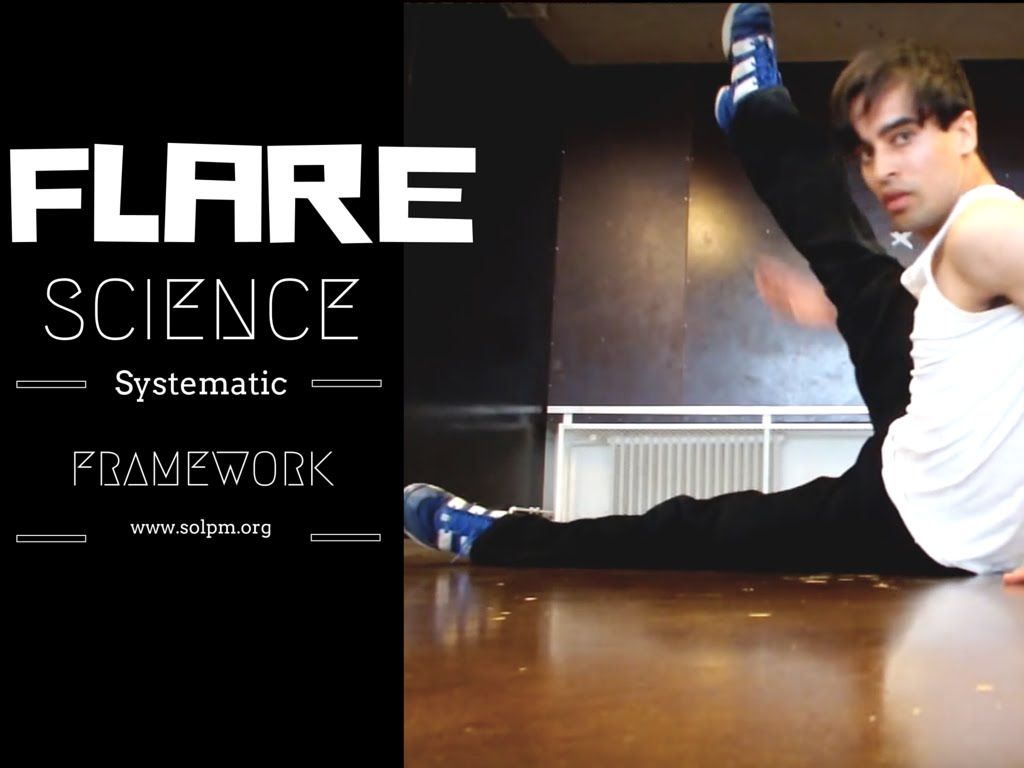 To have enough fingers, they ...
To have enough fingers, they ...
Directions of rotation
The nut or valve must not be turned left or right, clockwise or counterclockwise. With turns in dancing, it's less obvious, it's easier right-left here. Before turning, look in the direction in which you are going to rotate. Where I looked - there and ...
Turns and rotations
In fact, this is the same thing, but often, for brevity, only 360 is considered an expression, anything less is a turn. Everything is not very good with arithmetic, and if 90, 180, 360 are simple and clear, then all sorts of 270, 580 are numbers that don’t tell me anything! Somehow I have...
Basic Step & Footwork
Basic Step - the main step or the main move - a sequence of steps using which we make figures: changing places, changing between open and closed positions, rotations, and so on. There's a term in rock 'n' roll for idle - when a couple just do basic on...
Step! Step or more?
This word has several meanings. The step is like weight transfer. A step is like a stage in a sequence of actions: an instruction from IKEA! A figure is also a Step, although in Russian we don’t call them that. When the teacher says: “Let me show you some steps”, it means that he...
The step is like weight transfer. A step is like a stage in a sequence of actions: an instruction from IKEA! A figure is also a Step, although in Russian we don’t call them that. When the teacher says: “Let me show you some steps”, it means that he...
Frame
I don't like this word and try not to use it in class.
Unusual children's group
In social dances, like in a fairy tale…
Competition levels the art of the dancer
Usually in sports everything is clear: ran the fastest - well done, here's a medal for you! There are no measurable indicators in dancing, everything is very relative. Therefore, refereeing is often accused of inadequacy, and the dancers themselves have some kind of distortion. After another championship...
Sex in a dance commercial
Can dancing be promoted through sex? I dont know. It seems strange to me that there are men who, having read in an advertisement: "come to dance - we have a lot of girls," a priori believe that all these girls should give them at once. But there seem to be many. I myself went to the dance...
But there seem to be many. I myself went to the dance...
Is there sex in dancing
Is there sex in dancing or is there no sex in dancing? This is not known to science. Firstly, this is from the series: is it necessary to put ice in whiskey? Should I wear a hat in winter? Or what tastes better parmesan or cognac? It's not the same for everybody! Secondly, what does this even mean? We're talking about something special...
Dancing means or purpose?
It's a process, it can be anything! and I don't believe people who say: I just love to dance!
Roles and gender in dance
Historical fact that swing was danced mainly by a boy and a girl, and usually led by a boy.
Sexy dance styles
What is sex in dancing is a separate issue, but talking about it in different parties is interesting. The boogie party has never discussed the topic of sex in dancing, but husband and wife dance very often here. Until the blues had its own party, it was about sex, which appeared . ..
..
Positive feedback
They often scold me that I am an evil teacher - I do not praise. But to me always these: "you dance cool", from my idols in dancing, seemed somehow not true. Like Markus tells me that he likes the way I dance. But an hour ago he said he couldn't watch without crying...
7 How do I know the pace?
There are programs that automatically determine the tempo of the track, but in the case of jazz and blues, they often make mistakes, so it’s better to use programs where you have to count “manually” - turn on the music and tap on the space bar or on the phone screen. Once upon a time I finished...
Routines at the lessons
All teachers in the classroom give "routines". Sometimes it’s just because I forgot to prepare for the lesson, but you can make a diagram on the fly and no one will even notice. Some time ago I had a "methodical corral for routines." The students asked for too many different things: for someone about .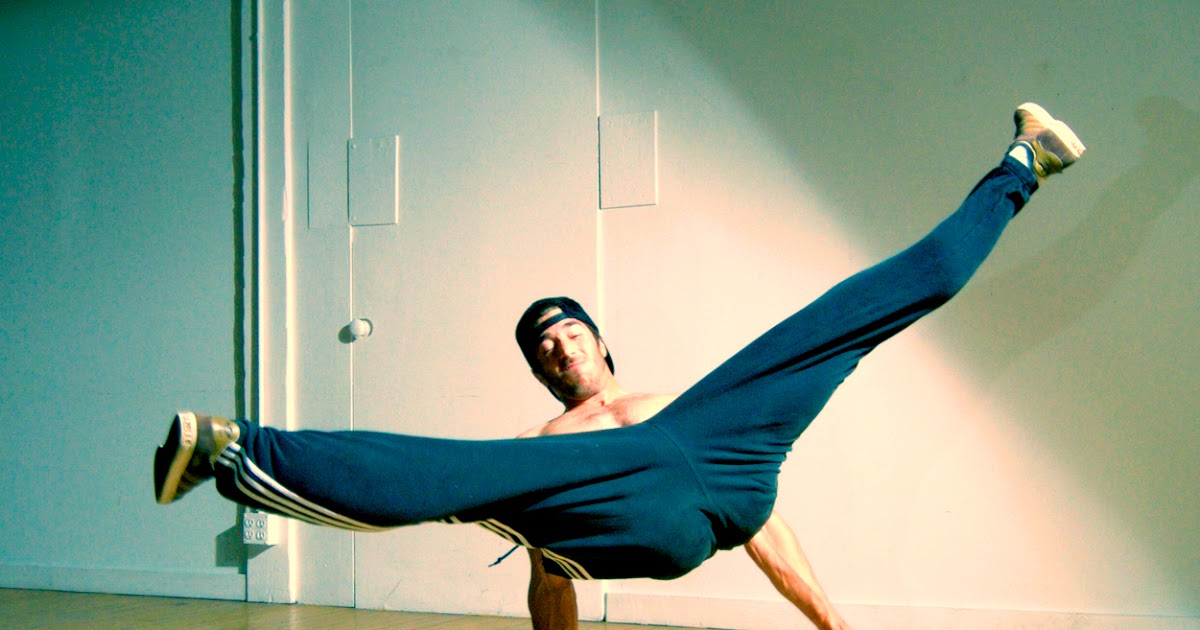 ..
..
System in dance
I remember how at school teachers wrote the topic of the lesson on the blackboard, for example: homogeneous members of a sentence. But one day, our Russian teacher said that this lesson would not have a topic and just started giving some assignments, dictating something, and so on. And at the end of the lesson he asked: how ...
Why don't I correct errors?
People often ask me: "why don't I correct my mistakes right away in class?" For example, I’m not saying that here the hand should be lower, here it’s not necessary to step here, and so on. It would seem that it is easier: do not do this, but do this. But it seems to me that this is advice from a series of "become hedgehogs"! If...
Choreography puzzles
I wonder if everyone who tried to set routines faced this stupor? Here we are on the left, then an eight or two that have not yet been thought of, and we start with our backs here ... And nothing comes to mind that will fit in this .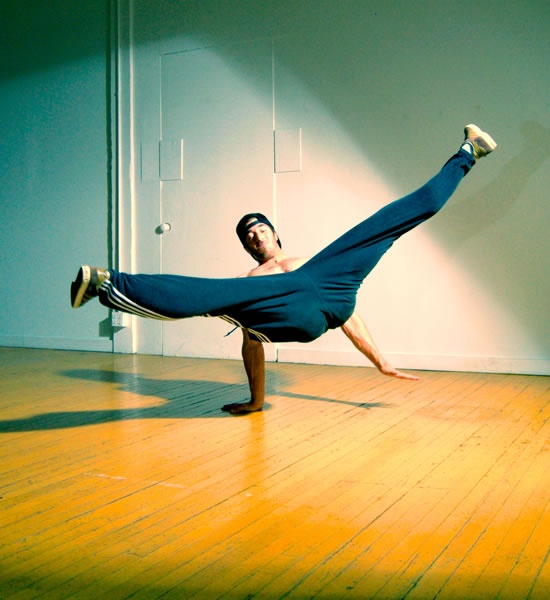 ..
..
Perception of levels and groups
Kryuchkov was taught by, let's say, an aged uncle - Uncle Kolya Serezha somehow asked why he had already gone to the initial group 5 times, although his level had long been much higher. To which he replied: “And what is the point of me going to the advanced group and being there ...
Lindy Hop - beautiful dance
A long time ago, at Fyodor's lesson, someone from the crowd was indignant at the new movement: "But it's not beautiful!" to which the maestro replied: — Who told you that the Lindy Hop is a beautiful dance? In fact, the dance is beautiful, but in its own way. The same Fedya once said that he was engaged in exactly ...
Why are they expelled from lessons
A common question is when part of the beginner group goes to the next level, and the second part is asked to take the basic course again. We never liked repeaters, considering them miserable. But we are all different, and learning something is not always easy. One is enough for someone...
One is enough for someone...
Why advertising lies
We all say that everyone can learn to dance, that it's quick and easy. But every experienced dancer, remembering his way, speaks of a sea of difficulties, and yet most of them quit dancing altogether - in a year less than half of the set remains, and if not removed from ...
Why Meditation
I no longer remember exactly where I got this name for the second part of the lesson or the continuation of the warm-up. In almost every class, after a short warm-up, I say let's meditate, or much less often let's run. It seems that it all started with the fact that Ksyusha decided to lead a part ...
Circular holivars
Once upon a time, when my friend stopped being a beginner, but hadn't quit dancing yet, she said that while reading posts and on the Internet, she noticed how the story goes in a circle. What many now write, considering it important, seems to her and all of us to be nonsense and trifles not worth it . ..
..
Why We Admire Beginners
Vaugre wandered into the house party, and, watching the couple dancing recently, noted an interesting fact about the Lindy party. We have some sort of sectarian admiration for beginnings. Some kind of inexplicable happiness appears on the faces of experienced dancers, at the sight of...
The whole Lindy Hop in two hours
One day, Ksyusha and I, preparing for a new set, made a lesson plan. In about an hour, we wrote a very detailed plan for several months. Since there was still time to rent the hall, we made a plan for the continuation group, also for several months. And then after...
Want a Horse Faster?
Henry Ford said: "If I asked customers what they needed, they would say: "Horse faster." If I'm used to hanging my jacket on the doorknob, then I don't need a different shape of the handle, but a hook on the wall, but I may not know this. Students in dance schools often give advice...
The Mariinsky is resting
At one of the first Swingfests, watching a lesson on Afro, we talked with Fedya Nedotko about dancing. He came up with an interesting classification of dances. "Root" - this is actually lindy, boogie, salsa, rumba and other dances that originated in various social environments ....
He came up with an interesting classification of dances. "Root" - this is actually lindy, boogie, salsa, rumba and other dances that originated in various social environments ....
Because talent is
Somehow, the young lady and I took second place in the competition. And everyone began to say what a talent she was: she has been studying for about a year, and now she has a prize and all that. Many years have passed, and this young lady, hitting her memories, said "... and then I began to go to dances every...
Entertaining linguistics
Our dances originated in the English-speaking culture, and often there are contradictions or just funny situations, from incorrect translation. Let's say a simple word STEP - STEP, it would seem. But! Americans often use the word STEP to refer to what we call figures: Swing Out,...
Bad technique is not a Style
One day, Vaugre and Coplan were arguing about the then popular phrase: Bad technique is not a Style! Vogr's idea was: Any Style was once a Bad technique! There is a sound idea in this, but how can you still distinguish them, because not every Bad technique becomes a Style? And me then. ..
..
Chester and Jazz
I was late for Chester's class by five minutes, and they managed to learn a piece of the jazz routine. There were a few moves I knew, but there was one thing I couldn't figure out. It was all done to fast music, and Chester didn't explain much of anything. And every time on this...
Hustle is an exercise
The first time at the dance, I could not understand: why the continuation group dances in a completely different way. It turned out that Metelsky gave beginners Hustle as an exercise in rhythm, the basics of leading-following and just coordination. And then we switched to Single time boogie and...
Thinking is harmful
Blogger theperfectfollow's post about sexism in dancing was very popular. The first example was the council of teachers: LADIES, DON'T THINK, JUST FOLLOW. Say, it means that women are fools, but men can think. Not really! Thinking on the dance floor is harmful regardless of gender!...
Listen or hear
Somehow Fedya comes out of a lesson for absolutely beginners, I decided to joke: what new did I learn for the hundredth time from Lenart? And he’s like: no matter what time it is…. Teachers of this level say the same thing from lesson to lesson, they have a set of texts that they simply repeat. You...
Teachers of this level say the same thing from lesson to lesson, they have a set of texts that they simply repeat. You...
Ksyusha Apozyants is an ideal partner for tricks
At one of the first Swingfests, Katya Avlasevich gave a master class on tricks with some St. Petersburg rock'n'roll player. For some reason, we ended up there with Ksyusha in a pair. I then danced with her friend Lena, and we did a lot of tricks. But we didn't know how to pancake. The lesson was so...
Donnie Burns tripped
At swingfest 2004 Fedya told me a story about Donnie Burns, which sounds very plausible, I don't know how true it is. Donnie Burns has been the champion of all ballroom dancing an incredible number of times, for many years in a row. All our dancers tried to copy it...
Stop, I'll do everything myself
I didn't have a partner, but Katya Avlasevich's partner disappeared somewhere, and we got into a pair - they didn't know the rotation then.
How much to hang in grams
No one knows "how much to hang in grams". .. The amount of information for each lesson or for a series of lessons is quite difficult to choose so that everyone is satisfied. Once, after a lesson on Carolina Shag, Pasha and Tanya asked if there was enough material or if more was needed. All...
.. The amount of information for each lesson or for a series of lessons is quite difficult to choose so that everyone is satisfied. Once, after a lesson on Carolina Shag, Pasha and Tanya asked if there was enough material or if more was needed. All...
Technique and vocabulary
Linguists often talk about aspects of language: phonetics, grammar, vocabulary, and so on. Social dances are very similar to languages. There is technique and vocabulary here, both aspects are closely related and each of them consists of its own aspects. A set of figures or footwork variations is...
Case management
Once upon a time, Fedya said in a lesson that if a girl has never seen a swingout, she will not fall for it, no matter how cool you are. There must be a precedent. And there is. There are basic figures that you need to know. But it is impossible to know all variations. Once they had a lesson with Nastya Murashko...
Whether to open windows
Before I started teaching, I was surprised that many teachers teach in sweaters and jackets. But then I noticed when you stop to talk, the warmed-up muscles cool down sharply and then start to hurt. The same thing happened before, just considered this state...
But then I noticed when you stop to talk, the warmed-up muscles cool down sharply and then start to hurt. The same thing happened before, just considered this state...
Fedya sorry
When all Lindy Hoppers in Russia knew each other by face and by name, Fedor taught his teammates that a partner should not wave his hand at once in a swingout... Such a characteristic movement of Frankie Manning. Just then, for some reason, everyone did it without really understanding why, and it often ...
Routine music
I don't like it when routine is put on mixed tracks. Usually we choose some worthy song, and it seems to me that no DJ can make a song better than the author who won a Grammy or somehow distinguished himself. And it's just a crutch for a choreographer who...
Social dance choreography
In social dances, this concept is a synonym for a previously invented bunch. Although in fact the meaning of the word is much broader. Now they are increasingly replacing it with the word routine - routine. Which I think is more accurate. Never liked this term - choreography - in relation to...
Which I think is more accurate. Never liked this term - choreography - in relation to...
The only Count I know is Count Basie!
When Frankie Manning started teaching Lindy Hop at a dance school at the very beginning of the Swing revival at 90e, after his retirement from dancing and working at the post office, as he described in his book, he was often asked: "Is this figure 6 or 8 - is it 6 or 8 counts?" He is very...
We are from St. Petersburg - we do not stomp
I don't remember what year it was... It seems that it was a lesson from Lennart, and in the routine that he gave, it was necessary to stomp. It was dangerous to stomp in Casa Latina then - the disc with music was jumping. And Fedya just didn’t like it when they stomp, so he taught his people not to be elephants ....
Bluesnight in Herrang 2001
My first bluesnight happened in 2001 in Herrang. I did not know what Bluesnight was, but I heard such a bike. When people came to the hall for classes in the morning, some couple continued to dance. Everyone stood quietly along the walls, and only when the teacher came in and turned on his music...
Everyone stood quietly along the walls, and only when the teacher came in and turned on his music...
Adequacy of refereeing
I came to dance in the fall of 1997, and I think in the spring of that year there was one of the first boogie-woogie competitions. The organizers did not know who to put in the judges - they decided to put the deputy director of this very Palace of Culture, it is clear, of course, that the aunt does not understand anything, but it was necessary ...
It would be strange if it weren't for...
One day, I received a letter from a friend. There was something like: - I'm 37, I've never danced, and now I'm going to you tomorrow for an open lesson. Cho something I piss ... what could be answered here? A man who didn't dance and lived in Russia for 37 years... It would be strange if he didn't...
Fifth interaction
The first bluesway took place in some kind of loft where there were a lot of installations - in a strange room with strange things. Ron and Sharon hung up a sign in the first lesson, with two men and arrows, which explained that in the blues there should be a connection with gender, music and ...
Ron and Sharon hung up a sign in the first lesson, with two men and arrows, which explained that in the blues there should be a connection with gender, music and ...
About changing attitudes towards dance styles
I usually teach lindy and boogie, but I've tried blues, balboa, vks, and carolina shag. All dances are the same, however, in each there is an emphasis on something different. And thanks to these accents, it is easier to present some common aspects using the example of this particular dance....
Oh, I forgot the words, I usually lie...
When I taught Ksyushich, preparing for the lesson, we made several versions of the program in order to take into account possible scenarios. And in order to be able to agree on a change in the concept already in the lesson, they decided to simulate sclerosis, so it will be more fun for the students. On...
Types of dance teachers
There are different dance teachers. There are talkers who explain everything in words.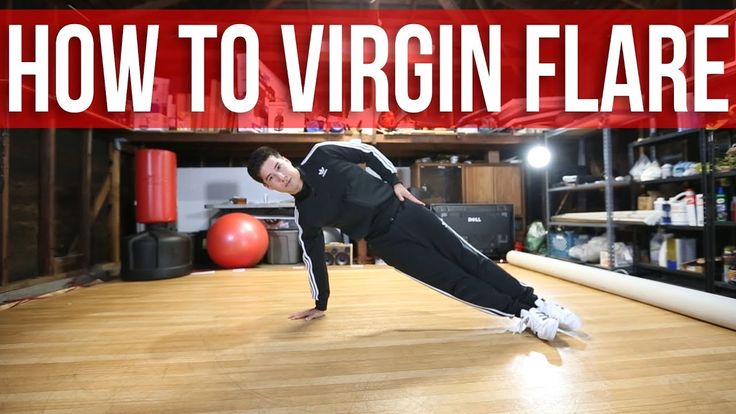 A silent person can be a narcissist or a bore. The first ones just show, and you repeat as best you can, usually it turns out completely different. The bore will stand next to you and silently repeat until you at least...
A silent person can be a narcissist or a bore. The first ones just show, and you repeat as best you can, usually it turns out completely different. The bore will stand next to you and silently repeat until you at least...
You should guess sometimes
In 2001 I visited Herrang Dance Camp for the first time. Lenart is teaching a lesson with Hannah (I think it was Lundmark), and they show some kind of variation. Suddenly a question from a girl from the audience: - How should I understand that I am being led to this particular variation, and not to some other one?...
Fake or make it
There is an expression: Fake it till you make it. This principle is often applied in social dance training, but the catch is that you can stop at a good fake and never do the right thing. Often people just pretend to lead and follow. All techniques...
LevelSalmon
Once upon a time, the Christmas camp introduced bracelets for level identification. Now this is the norm.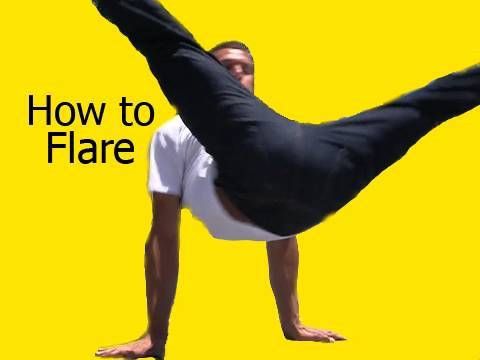 So, the colors of the bracelets were chosen by the girls, and there was salmon! For me, it's pink, but it went to group A, plus it's not a question. And after the selections, everyone shared their emotions in ...
So, the colors of the bracelets were chosen by the girls, and there was salmon! For me, it's pink, but it went to group A, plus it's not a question. And after the selections, everyone shared their emotions in ...
A plus no question
Once at a meeting of the Christmas camp orgs they were discussing how to organize the levels in order to avoid the negativity of the participants. Then they only tried to introduce selections at the beginning of the event. And there were a lot of tantrums: I've been dancing for a year already, I want to be in A, why am I in B? And here at the meeting someone ...
To dance or get married
In conversations about pair dances, the topic of acquaintance with the opposite sex often flashes. The other day, a marketing genius suggested the topic of advertising: if you want to get married - you should come to us! It seems to me that such a slogan will not be fair: there are much more girls here than boys, just like ...
To a bar or to a dance?
I have one “non-dancing friend”, I myself don’t know how it happened, we’ve known each other since the second grade .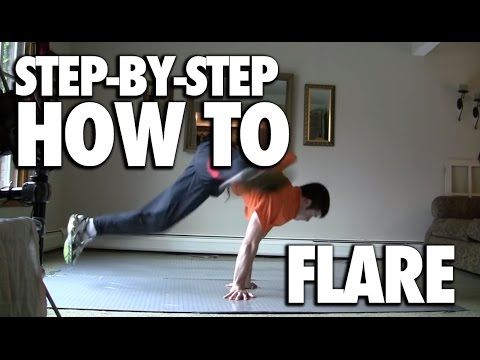 .. We go to bars to chat, he is surprised every time that I rarely go to bars, in fact, almost never without him: how Are you meeting girls or making new friends...
.. We go to bars to chat, he is surprised every time that I rarely go to bars, in fact, almost never without him: how Are you meeting girls or making new friends...
Dances for Introverts
- Why learn to dance? - First of all, it's beautiful, but it's not accurate or it doesn't matter... *** Have you ever experienced this? A neighbor at the counter in a bar or a colleague at a nearby computer, or in a smoking room, or in a cafe at lunch... In general, does someone... tell you something? And you can't get up...
Comfortable vs Habitual
Often in class, in response to: “it’s more convenient to do it this way”, I hear: “no! I feel more comfortable like this.” Here is an example. If you give a musical instrument into the hands of a person who has never studied music (like me, for example), he will somehow take it incorrectly and say that ...
No, just a "successful dancer"
I think it was 2004, there were less than 100 people at the Swing fest, but then it was a lot.
